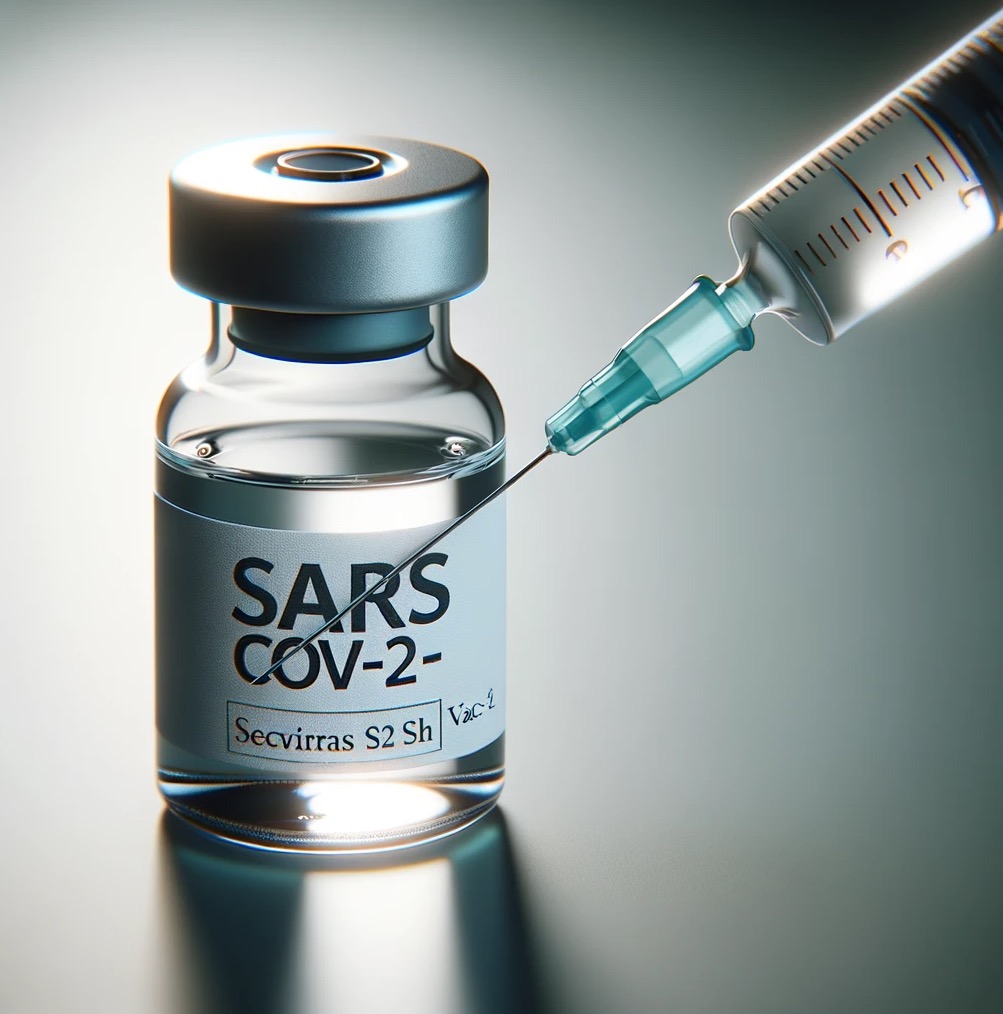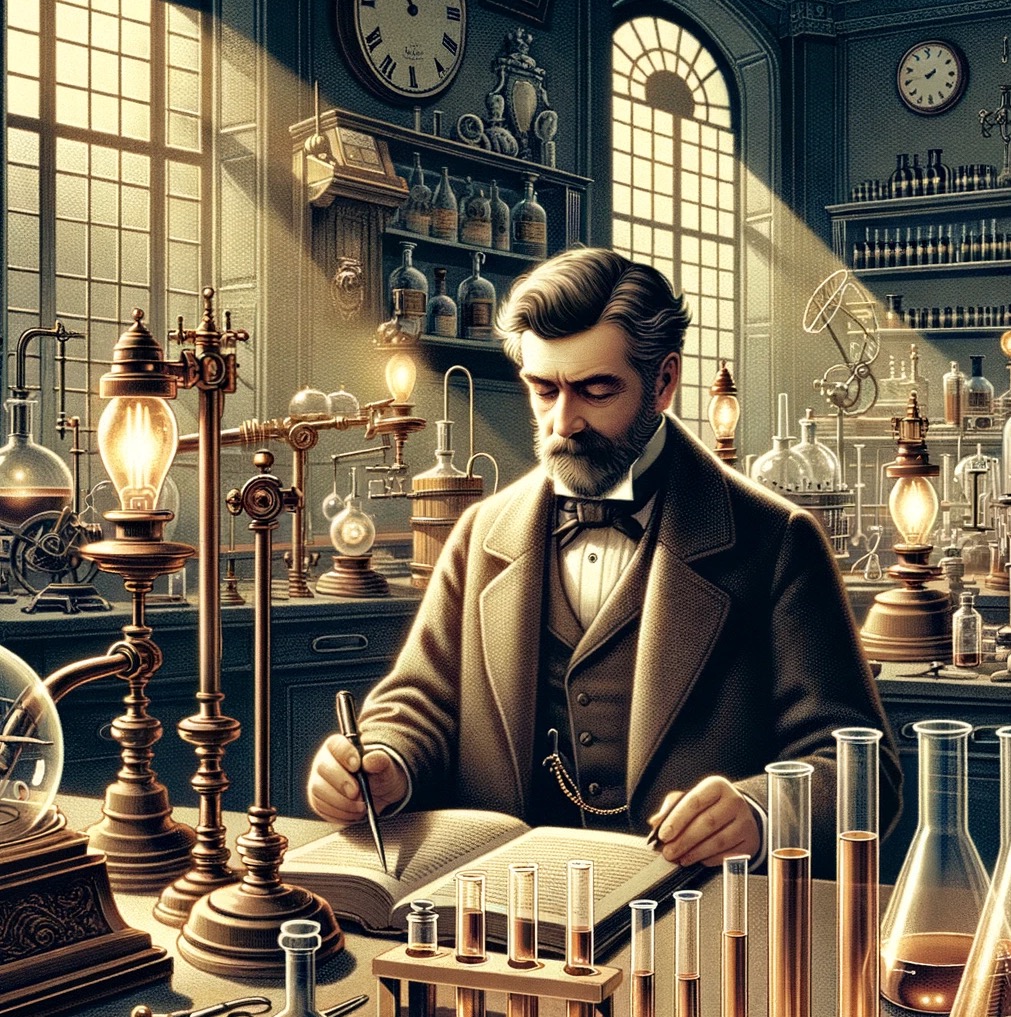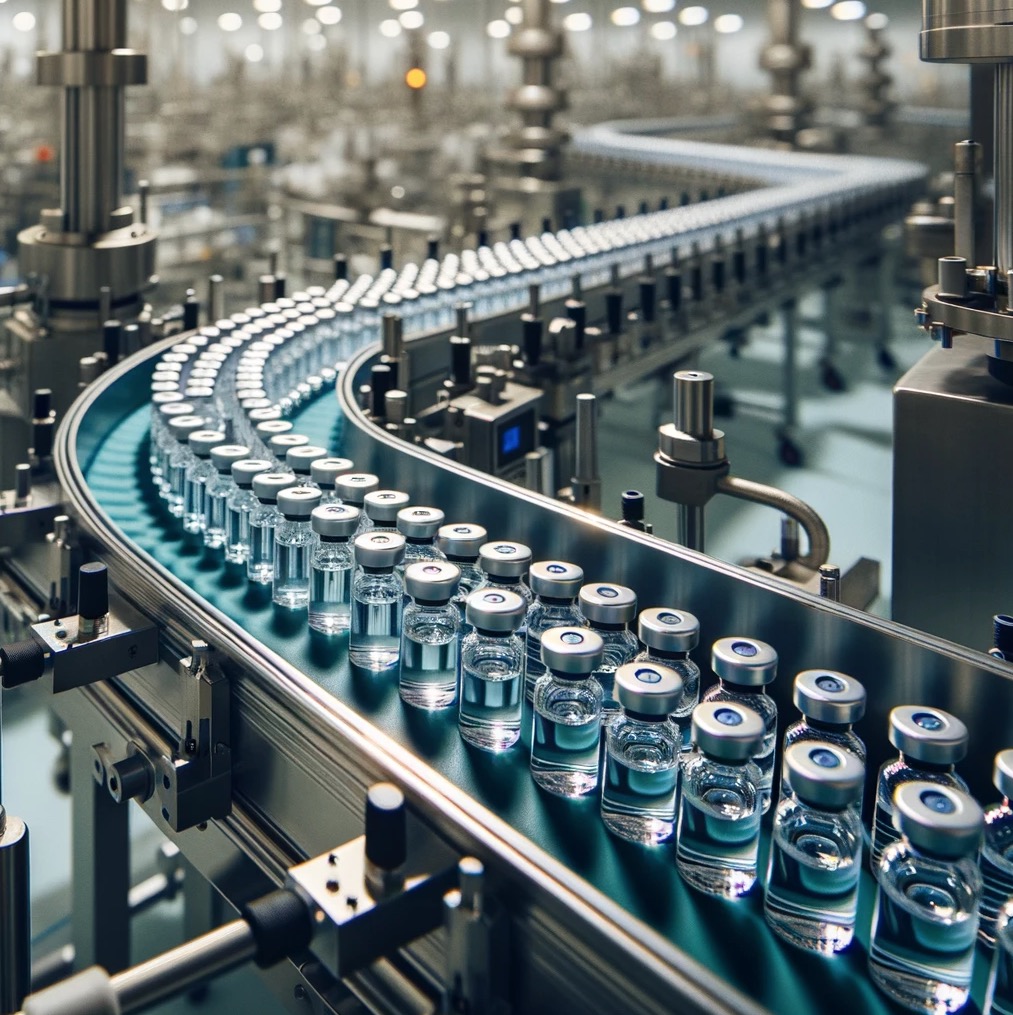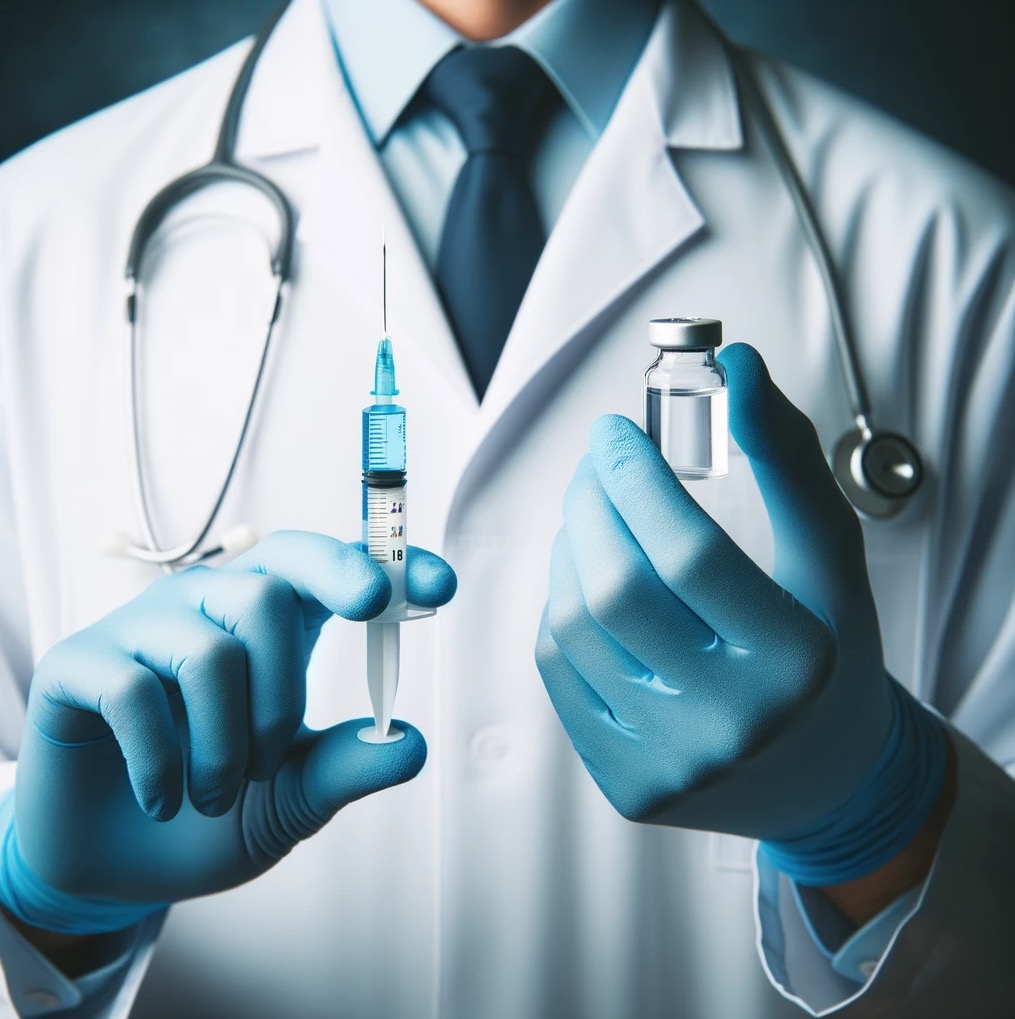Today’s Focus of Attention is reader-supported. We sometimes include products we think are useful for our readers. If you buy through links on this page, we may earn a small commission.
In a world where a microscopic entity can halt the hustle and bustle of entire nations, the importance of vaccines cannot be overstated.
Our well-orchestrated immune system is indeed a fortress, but vaccines are the seasoned warriors that fortify these walls, teaching our bodies to recognise, combat, and remember deadly invaders.
Vaccines have been the world’s allies in battling infectious diseases, dramatically reducing mortality rates and, in a few cases, eradicating the foes altogether.
For instance, before the measles vaccine was introduced in 1963, major outbreaks led to about 2.6 million deaths each year globally. Fast forward to now, and that figure has plummeted by over 95%.
But creating these medical marvels is no small feat. It’s a complex, rigorous, expensive, and lengthy expedition from the lab bench to the veins of individuals around the globe.
But how does this journey unfold? How are vaccines crafted, tested, and rolled out to the masses?
In today’s article, we’ll traverse the meticulous path of vaccine development, shedding light on the common types and the step-by-step process that ensures they are safe and effective for public use.

Historical Evolution of Biological Immunisation
The voyage into vaccine discovery is a remarkable narrative of human perseverance. From the earliest endeavours to modern-day marvels, each epoch has contributed to the amelioration of collective health.
Let’s traverse through time and unveil the milestones that have shaped the vaccine landscape:
18th Century: The Genesis of Immunisation
The concept of vaccination took root in 1796 when Edward Jenner, an English physician, discovered that milkmaids who had contracted cowpox appeared to be immune to smallpox.
This led to the creation of the first smallpox jab.
19th Century: Advancements and Discoveries

Louis Pasteur, the eminent French biologist, further propelled the field by developing vaccines for chicken cholera, anthrax, and rabies.
The term ‘vaccine,’ derived from the Latin word ‘vacca’ for cow, was coined to honour Jenner’s groundbreaking work.

Early to Mid-20th Century: The Era of Innovation

The 20th century witnessed an explosion of vaccine expansion, with Albert Calmette and Camille Guerin developing the Bacillus Calmette-Guerin (BCG) shield for tuberculosis.
A few years later, Jonas Salk and Albert Sabin created distinct shots for polio, ushering in a new age of prevention.
Late 20th to Early 21st Century: Molecular and Genetic Milestones
Advancements in molecular biology and genetic engineering catalysed the formulation of recombinant vaccines, such as hepatitis B. The Human Genome Project further enriched understanding, paving the way for improved applied science.
21st Century: The Age of Rapid Response and Modernisation
The advent of novel platforms like mRNA and viral vector technologies has revolutionised vaccination development, as exemplified by the swift conception of COVID-19 vaccines.
The global response to the pandemic showcased the ability of modern science to design, test, and deploy immunisations of a magnitude never before recorded.
Common Types of Vaccines

Vaccines come in various forms, each tailored to combat different infectious agents or to work around specific challenges posed by them. Here’s a breakdown of the most widespread:
Inactivated Vaccines
Employing a killed version of the germ that causes a disease, inactivated vaccines are a safe bet for individuals with weakened immune systems.
They usually need several doses or boosters to maintain immunity.
Notable examples include hepatitis A, flu, polio, and rabies.
Live-Attenuated Vaccines
These use a weakened form of the pathogen, offering robust natural defence, often with just one or two shots.
While super effective, they’re not normally suitable for people with compromised immunological systems.
Common live-attenuated vaccines protect against measles, mumps, rubella, rotavirus, chickenpox, and yellow fever.
Messenger RNA (mRNA) Vaccines
A modern marvel in the sphere of immunisation, mRNA vaccines instruct our cells to produce a protein that triggers an immune response.
They don’t contain live viruses and have shorter manufacturing times, making them a game-changer in rapid reaction to emerging threats like COVID-19.
Subunit, Recombinant, Polysaccharide, and Conjugate Vaccines
By utilising specific pieces of the infectious particle, such as its protein, sugar, or casing, these jabs offer a targeted response and are suitable for individuals with weakened infection-fighting systems or allergies.
Examples include shingles, hepatitis B, meningococcal, and pneumococcal diseases.
Toxoid Vaccines
By harnessing a toxin produced by the germ, toxoid vaccines defend against illnesses caused by bacterial toxins, providing immunity against conditions such as diphtheria and tetanus.
Viral Vector Vaccines
Using a harmless virus to deliver genetic material into our cells, VVVs have showcased their utility in the fight against outbreaks like Ebola and have been pivotal in the rapid development of COVID-19 vaccines.
“Each type of vaccine offers a unique set of benefits and challenges, making the field of immunisation a constantly evolving frontier.” Dr Peter Hotez, Dean of the National School of Tropical Medicine at Baylor College
Every vax undergoes rigorous testing and evaluation to ensure its safety and efficacy before reaching the public.
The diverse array of prevention technologies underscores the incredible ingenuity and relentless pursuit of science to safeguard human well-being amidst the constant evolution of infectious diseases.
The field of vaccine technology is undergoing a dynamic transformation as a result of a combination of technological advancement, new threats, and an unwavering quest for better public health outcomes.
Now, let’s delve into how vaccines are made.
Steps for Producing a Vaccine

Step 1. Research and Discovery
The first stage in making a vaccine is to find the germ that causes the disease and understand how it infects and harms the body.
This process was vividly illustrated in the early stages of the COVID-19 pandemic.
In December 2019, a novel coronavirus, later named SARS-CoV-2, emerged in Wuhan, China, and, in the blink of an eye, spread across the globe, triggering a public health crisis. Scientists worldwide moved with the speed of light to decipher the virus’s genetic makeup.
By January 2020, Chinese experts had sequenced and shared the genome of SARS-CoV-2, a step that laid the groundwork for global vaccine development efforts.
Armed with the DNA blueprint of the virus, researchers embarked on a quest to understand its structure, how the agent infiltrates human cells, and the mechanisms by which it triggers illness.
Scientists used various methods to study the pathogen, including growing it in the lab, examining genetic material, or observing its effects on animals.
Based on this knowledge, they designed a potential vaccine that could trigger an immune response against the microorganism without causing the sickness.
This is called the ‘antigen,’ which can be a weakened or killed form of the germ, a part of it, or a substance that mimics it. Amongst the antigens selected for COVID-19 vaccines were the spike protein of the virus, which it uses to enter human cells.
This crucial choice of antigen became the cornerstone for several development projects, manifesting in different technologies, including mRNA, viral vectors, and protein subunit vaccines.
“A scientist who is also a human being cannot rest while knowledge which might reduce suffering rests on the shelf.” Dr Albert Sabin, developer of the oral polio vaccines
Step 2. Preclinical Testing
Before a potential vaccine is tested in humans, it has to undergo preclinical testing to evaluate its safety and effectiveness in lab animals. This involves exposing those animals to the vaccine and then to the germ to see if they develop immunity and any side effects.
At the same time, this stage helps decide the optimal dose, route, and schedule for the inoculations. If the results are promising, the vax moves on to clinical trials. Here’s an example.
Faced with the devastating Ebola outbreak that swept through West Africa from 2014 to 2016, the race to find a viable vaccine became a paramount global health imperative.
During this pivotal phase, scientists evaluated the safety and immunogenicity of prospective vaccines in animal models, including primates, which are physiologically like humans. The promising candidate, rVSV-ZEBOV, demonstrated robust protection in these preclinical trials, pushing human tests.

Take air-drumming to the next level
Step 3. Clinical Trials
Clinical trials are studies that test the vaccine in humans under controlled conditions. They involve volunteers who give their informed consent to take part.
This episode has three phases:
Phase 1
A small cohort of healthy adults (20 to 100) receive the jab to assess its safety, dosage, and immune response.
Phase 2
The vaccine is given to a larger group of individuals (100 to 300) who have characteristics similar to the target population, such as age, health status, and risk of exposure. The aim is to evaluate its immunogenicity.
Phase 3
Thousands of people (3,000 to 30,000) who are randomly assigned receive the shots or a placebo (a harmless substance). The goal is to compare the outcomes of the two groups and confirm the security, efficacy, and side effects.

If the vaccine passes the three phases of clinical trials, it can apply for regulatory approval from authorities such as the Food and Drug Administration (FDA) in the US or the European Medicines Agency (EMA) in Europe.
A recent case is the journey of the Pfizer-BioNTech and Moderna COVID-19 vaccines. From conception to authorisation, those vaccines are a testament to the remarkable strides made in clinical trial research during the 2020 pandemic.
Both jabs entered human subject testing at an unprecedented pace, with rigorous evaluation through all phases.
Phase 1 assessed safety and dosage swiftly followed by Phase 2 trials that expanded to check the vaccines’ performance across a broader demographic. The monumental Phase 3 enrolled tens of thousands of volunteers around the globe, assessing the jabs on an impressive scale.
Pfizer and Moderna showed high effectiveness and a good safety profile, leading to Emergency Use Authorisations within months of entering clinical trials.
“The three phases of the trial are about always asking the question, Can we make it a little harder for this vaccine to still show that it works?” Dr Paul Offit, a paediatrician specialising in infectious diseases.
Step 4. Regulatory Review and Approval
This is the phase of evaluating the scientific data and evidence from clinical trials and other sources to determine if the vaccine matches the standards of safety, potency, and quality. This involves reviewing the manufacturing process, ingredients, testing methods, and labelling.
Regulatory agencies may consult with external experts or advisory committees for their opinions and recommendations at this stage.
Provided that the vaccine meets all the requirements, it is granted a licence for public use.
The battle against the COVID-19 pandemic saw a pivotal role played by regulatory entities in expediting the rollout of life-saving vaccines. Through Emergency Use Authorisations, these agencies were able to assess and authorise the novel vaccines against COVID-19 while guaranteeing rigorous standards of security and efficacy.
“The regulatory process in vaccine approval is about ensuring a balance between efficacy and safety.” Dr Scott Gottlieb, former FDA commissioner
Step 5. Manufacturing and Quality Control

In this chapter, pharmaceuticals produce vaxxes in large quantities while checking consistency and excellence.
They follow strict protocols and standards for each step of production, from sourcing raw materials to packaging finished products. Manufacturers conduct QC tests on every batch of vaccines to check purity, potency, sterility, and stability.
Companies also monitor and report any adverse events or problems that may occur during or after manufacturing.
AstraZeneca is an outstanding example.
In response to the global urgency for COVID-19 vaccines, this company formed multiple worldwide partnerships to expand mass production capacity, aiming to produce billions of doses to meet the colossal demand.
Step 6. Recommendation and Distribution
Here, governments and companies decide who should receive the vaccine and how to deliver it to the population. This entails developing policies and guidelines based on scientific evidence, public health priorities, ethical principles, and resources.
To illustrate, a set of vaccines may be recommended for specific age groups, risk groups, or geographic areas. Others might need special storage or transportation conditions, such as cold chain equipment or security measures.
Moreover, the distribution process requires coordination and collaboration amongst various stakeholders, including governments, health care providers, international organisations, civil society groups, and private sector partners.
Step 7. Monitoring and Effectiveness
This final stage refers to collecting and analysing data on how well the vaccine works and how safe it is in real-world settings.
Pharmaceuticals and regulatory organisms conduct surveillance systems that track vaccine coverage rates, disease incidence rates, adverse events following immunisation (AEFI), vaccine effectiveness (VE), vaccine safety signals (VSS), and other indicators.
On top of that, monitoring helps identify any gaps or challenges in vaccination programmes and provides feedback for improvement.
Let’s take the Human Papillomavirus (HPV) as an example.
Post-licensure surveillance and many observational studies worldwide have showcased a large reduction in HPV-related cancers and precancerous lesions in vaccinated populations.
For instance, countries with high vaccination coverage, such as Australia, are on track to eliminate cervical cancer as a public health issue, thanks to the HPV shot. The surveillance data has not only demonstrated a decline in HPV infections but also a reduction in anal and oropharyngeal cancers, often associated with certain HPV strains.
“Monitoring vaccine effectiveness post-deployment is a crucial step in understanding the impact and success of immunisation programmes.” Dr Katherine O’Brien, Director of Immunisation, Vaccines, and Biologicals at WHO
A Milestone in the Vaccine Legacy
The eradication of smallpox stands as monumental evidence of the power and importance of vaccines.
Through a colossal global vaccination campaign spearheaded by the World Health Organisation in the 1960s and 1970s, smallpox became the first disease to be eradicated by human effort.
This unprecedented achievement was made possible by developing a safe and effective vaccine, coupled with an extraordinary international collaboration. Vaccination teams traversed remote and hazardous terrains, vaccinating individuals and communities and extinguishing the chains of transmission over time.
The last known natural case of smallpox was reported in 1977, and in 1980, the world was declared smallpox-free.
This historic victory saved countless lives and laid the foundational blueprint for global public health initiatives.

Wrapping Up
Vaccine development and distribution is an expensive, complex, and lengthy process that requires rigorous scientific research, testing, regulation, production, delivery, and evaluation. This also needs collaboration amongst actors from different sectors and disciplines.
Vaccines are a triumph of human ingenuity over diseases, helping our immune system protect ourselves and others, but they are not the only tool. Good hygiene and following disease prevention guidelines to prevent and control the spread of infections are paramount.
We invite you to stay informed and engaged with the ongoing developments in global health security and to advocate for science and welfare equity in your communities.
Your awareness and support are not just a beacon of hope but a tangible force propelling us towards a healthier, more resilient society.
What new frontiers will vaccinology conquer next?


